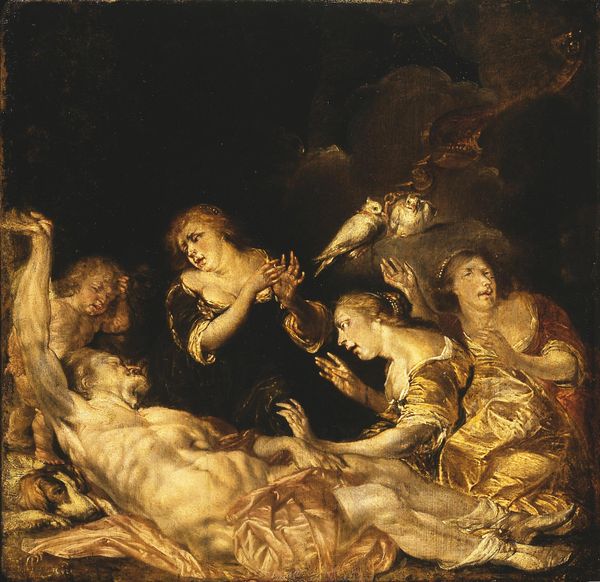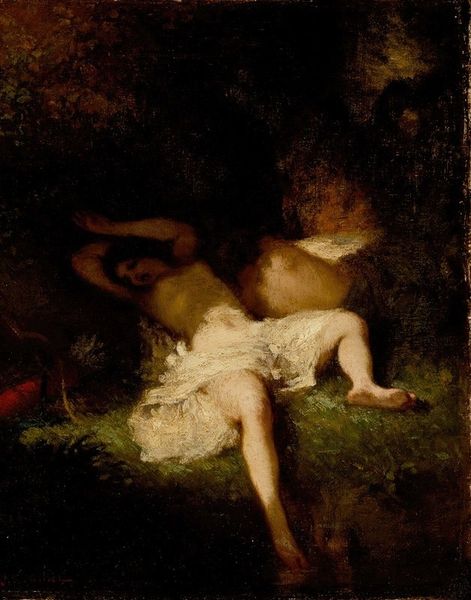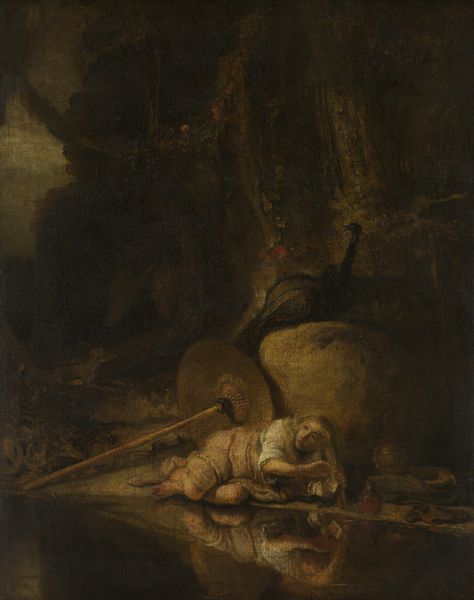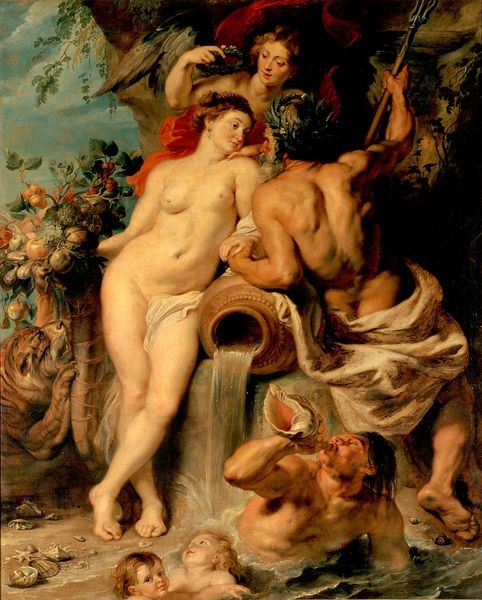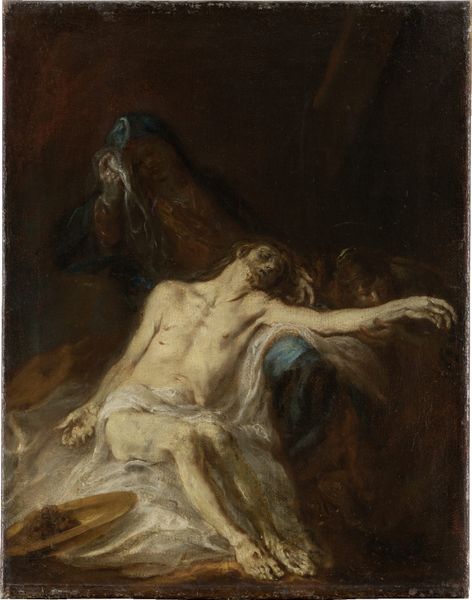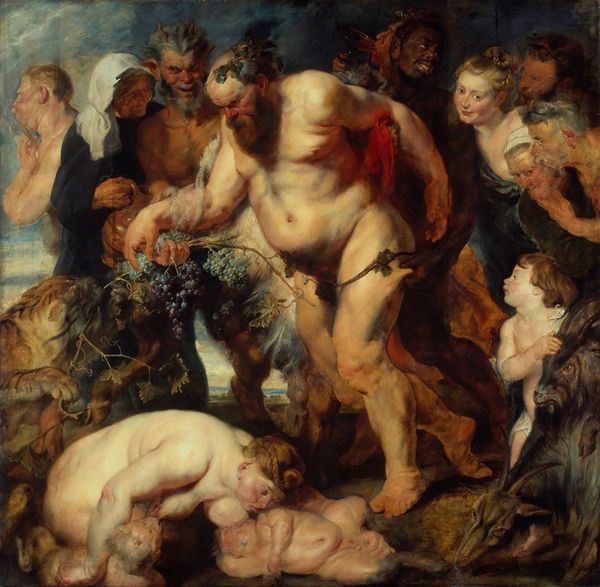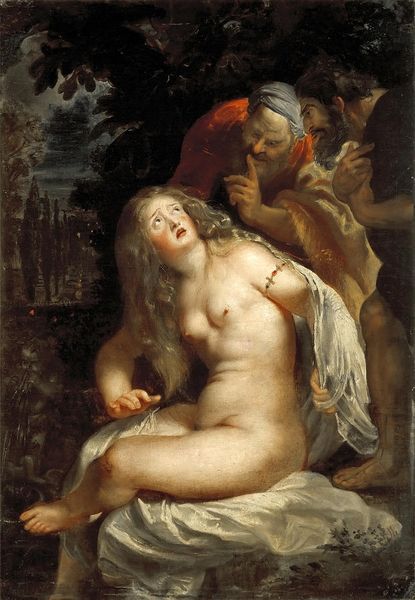
oil-paint
#
baroque
#
animal
#
dutch-golden-age
#
oil-paint
#
dog
#
oil painting
#
fruit
#
genre-painting
Dimensions: height 121 cm, width 98 cm, depth 12 cm
Copyright: Rijks Museum: Open Domain
Curator: The first thing that strikes me is the stark contrast of opulence and decay. Editor: Indeed. Let's explore this fascinating piece: Jan Weenix’s "A Monkey and a Dog with Dead Game and Fruit," created in 1704, employs oil paint to render a rather unsettling tableau. Curator: Unsettling is right. The immediate impression is almost macabre, juxtaposing the abundance of fruit with the slain animals. I wonder about the implications regarding social commentary in terms of consumption. It all seems so wasteful. Editor: It reflects a very specific patronage, though. Genre painting like this became popular precisely because of a growing wealthy merchant class, who wanted to demonstrate their affluence through lavish displays within their homes. Look at the formal garden hinted in the background – carefully designed, maintained by labor. Curator: And look at the rendering of the animal carcasses, that meticulous detail, almost loving in a way. You see similar techniques deployed on the arrangement of peaches and grapes: the same skill is applied whether organic or manufactured. Is the artist trying to suggest that each carries equivalent economic value? Editor: Perhaps. The imagery has definite ties to the long tradition of vanitas painting; these images certainly circulated to remind viewers of mortality. The question of whether they also inadvertently flaunt the privileges afforded by the Dutch Golden Age, when the country was involved in extensive trade networks exploiting overseas labor is crucial for its reception in the twenty-first century. What do you make of that watchful dog? Curator: It's an unsettling gaze, almost accusatory. As if we, the viewers, are being implicated in this scene of abundance and death. The painter really understood material culture; all things from painting media, subject material and object relations are interlaced here! Editor: Yes, definitely! So much to unpack, especially considering how Dutch art helped formulate ideas about national identity, ideas tied to trade and class status. The image asks critical questions around those lines even today! Curator: Indeed. We've really started to understand the rich layers of meaning Weenix was playing with. Editor: A worthy study of patronage, production, and presentation, wouldn’t you agree?
Comments
No comments
Be the first to comment and join the conversation on the ultimate creative platform.
